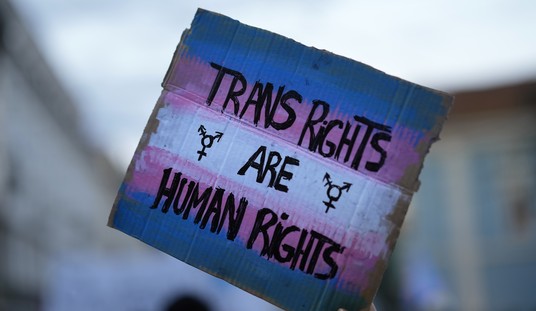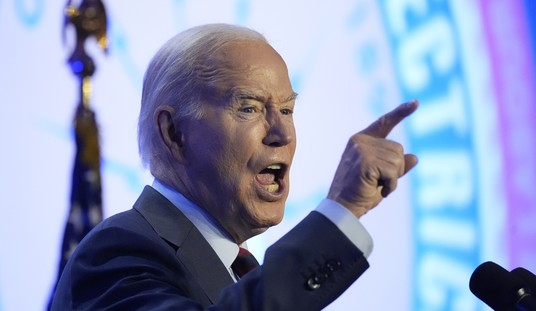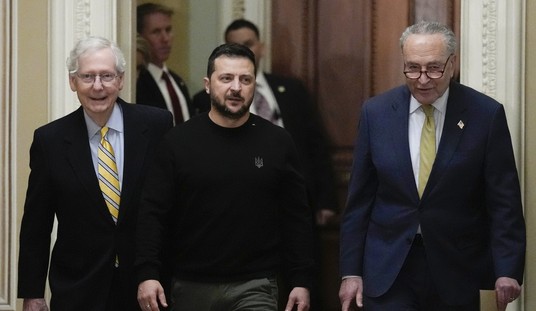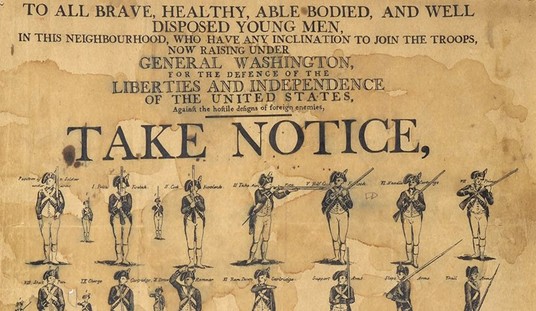
There’s a lot of poll news to digest, five days from the election. Let’s start with the Governors races, which I last examined on October 22. As always, my method – explained at the outset – is to look specifically at the question of, assuming the accuracy of the RCP poll averages, what percentage of the remaining undecided voters would need to break in the GOP’s direction to win? The underlying optimistic assumption, which I’ll return to more in my next look at the Senate races, is that the national environment should favor Republicans in winning more than half of those voters in most states – an assumption that has yet to be tested, and of course may be less pronounced and consistent in the Governors races than in Senate races, which are more nationalized. Even if we see a “wave” at the end, there’s no guarantee it will lift all the GOP gubernatorial candidates equally, especially the incumbents. But the overall picture we have from the October polls does show continued (if undramatic) movement across the board to favor Republican tickets – if not without a heartburn-inducing share of races where the Democrats are hanging stubbornly onto small polling leads.
It’s important to step back a minute and recall some basic facts about the terrain. There’s been a lot of talk about how the map favors Republicans in the Senate, with Democrats defending a bunch of incumbents in deep-red territory and only one blue-state Republican incumbent ([mc_name name=’Sen. Susan Collins (R-ME)’ chamber=’senate’ mcid=’C001035′ ], who has a 30 point lead in the polls) facing the voters. Of the ten most contested Senate races in 2014, six are in states won by [mc_name name=’Sen. John McCain (R-AZ)’ chamber=’senate’ mcid=’M000303′ ] in 2008, seven in states won by Mitt Romney in 2012, eight in states won twice by George W. Bush, all ten in states Bush won at least once. That’s one of the reasons why the expectations bar for Republicans has to be set so high.
Not so the Governors. This year’s Senate class was last up for election in 2008, a Democratic wave year – the Governors (with a few exceptions like New Hampshire, which still elects a Governor every two years) were last up in 2010, a Republican wave year. Republicans are defending incumbents in nine states won twice by Barack Obama (Wisconsin, Michigan, Pennsylvania, Maine, Florida, Ohio, Iowa, Nevada, and New Mexico), four of which haven’t gone Republican in a Presidential election since the 1980s. By contrast, Democrats are defending (and losing) only one governorship in a state (Arkansas) won by Romney two years ago. So, Republicans need something like a wave just to break even (I would describe anything better than break-even in these races as a wave, but we can argue after the election how to read the results).
Let’s split the Breakers chart in two parts. First, we’ll take a quick look at the truly uncompetitive states, all but two of which (Texas and Nebraska) involve incumbents:

You will note that centrist Republicans (Brian Sandoval, Susanna Martinez, John Kasich) are walking off with some races in states Obama won just two years ago, whereas the only two complete Democratic blowouts are in blue New York and California. And there’s a lot more Republicans not breaking a sweat. Of course, Texas, New York and California are still being lavishly contested given their prominence, but the outcomes have not been in any doubt for quite some time (the full schadenfreude-tastic story of Wendy Davis’ meltdown I will leave aside here). It’s possible that Butch Otter in Idaho is in more of a real race than the polls reflect, but we’re not seeing polling evidence of that.
Now for the top 21 contested races. Some of them (e.g., Vermont) are not really all that competitive, but you will notice that outside Cuomo and Brown, even the safe blue state Democrats are mostly hovering below 50%:

I added a row at the bottom for what Nathan Deal needs to force a runoff in Georgia; while Deal is not a lock for re-election, it will be very, very hard for Jimmy Carter’s grandson to get to 50% on Election Day.
The Hawaii race deserves special comment here, because three of the last 4 polls showed Democrat David Ige leading Republican Duke Aiona by 6, 12 and 1, but the fourth – the YouGov internet panel – showed Ige with a staggering 32 point lead. That’s such a huge outlier it skews the average to show Ige having locked the race up. Maybe he has, but if so, the other three polls are just wrong. YouGov has made a real contribution to this year’s polling, partly because it’s doing something different (different is good, for purposes of aggregate averages), partly because of volume (in one race, Nebraska, we have nothing but YouGov polling, and in many others we’d have few new polls without YouGov). But when a different methodology shows a result so vastly out of line with what both national pollsters like Rasmussen and local Honolulu pollsters are finding, you have to be skeptical.
Paul LePage’s lead in Maine is arguably due to a similar outlier, a Portland Press Herald poll showing him up 10 when the other four polls had him tied, down 2 (in YouGov), tied, and up 1. I don’t see a sign of the Portland Press Herald having polled in the 2010 race, in which LePage won by 1.8 points after 4 of the last five polls had him up by double digits. He should continue to be viewed as deeply endangered.
Interestingly, YouGov has persistently favored one side or the other in a number of races, but hasn’t
had a consistent partisan tilt across races (then there’s the internals – in Texas, for example, YouGov has Greg Abbott doing much better with Hispanics than have other polls). By and large, YouGov seems to be favoring incumbents, red state Republicans and blue state Democrats.
The big news yesterday is Scott Walker’s 46-45 lead among registered voters and 50-43 among likely voters in the Marquette Law poll, generally regarded as the gold standard in Wisconsin polling given its accurate record in Walker’s two prior races (and that’s before the late-breaking story that Mary Burke was fired by her family business). But the wide spread between the registered and likely voter results just underscores the extent to which the polling of that race in particular is dependent on its assumptions about turnout. A big part of the national case for Walker is that he’s a guy who has shown he understands how to close a deal in a close election on blue turf, including running a ground game. If Marquette is right and Walker ends up winning this race – and doing so with a margin of victory driven mainly by superior turnout among GOP base voters – that will only bolster that argument.
There remain two separate sets of key battlegrounds (aside from Colorado, which seems one of the likeliest races in the country to end in a race close enough for a recount, unless one side or the other turns out voters better than the polls project). One is the races where Republican incumbents continue to lag – Kansas, Florida, Alaska – as well as what ought to be a strong challenge in Illinois. The other is the raft of blue states, mostly in New England (Massachusetts, Connecticut, Rhode Island, and to a lesser extent longer shots in New Hampshire and Maryland) where Republicans have had surprising strength and/or recent momentum (as of now, only Massachusetts and Connecticut feature a GOP lead).
What about the trends in these races? Let’s look at the trend since October 1:

Once again, the trend across the competitive races is consistent with, but not proof of, a GOP wave in which more Republican candidates show steady gains than those showing losses – 11 out of 21 have expanded their lead or cut their opponent’s lead by 1 or more points since the start of the month, compared to five with minor improvements, one with minor loss, and four losing at least a point. Granted, some of the big gains are in races that still look like likely defeats or easy wins, but the overall 1.3 point improvement in the GOP’s standing relative to the Democrats is encouraging, as is the fact that most of the improvement came from growth in the GOP’s vote – up 1.6 points, on average, with Democrats up 0.3. That’s consistent with late-deciding voters breaking the GOP’s way.
If we isolate the trend since October 10, we see the same pattern:

What if we zero in on the change since October 22? At this point, it’d be surprising to see a ton of movement across the board in just 8 days this late in the game, and in fact that one Hawaii poll basically swamps the trend (without Hawaii, it would be a 0.5 point move in the GOP’s direction, not bad for 8 days). But we still see 7 races shifting at least a point to the Republican, versus only three in the opposite direction – and the average Democratic candidate declining in the polls, with nine candidates polling lower than they did on the 22d. That too is consistent with what we would expect to see if the national environment constrains the number of voters who are willing to pull the lever for a Democrat this fall.

Time to get giddy? No, not yet. We still don’t know how accurate the polls will be, and if Republicans right now win the tied Colorado Governor’s race and all the ones with Republican leads, that would still mean losing four GOP-held governorships (including a painful loss in Kansas and a potentially important loss in Florida to the oleaginous Charlie Crist), for a net gain of zero for either side – a good year, but one with some costly setbacks and disappointments. On the whole, however, I’d rather be playing the Republican hand than the Democratic one right now in these races.













Join the conversation as a VIP Member